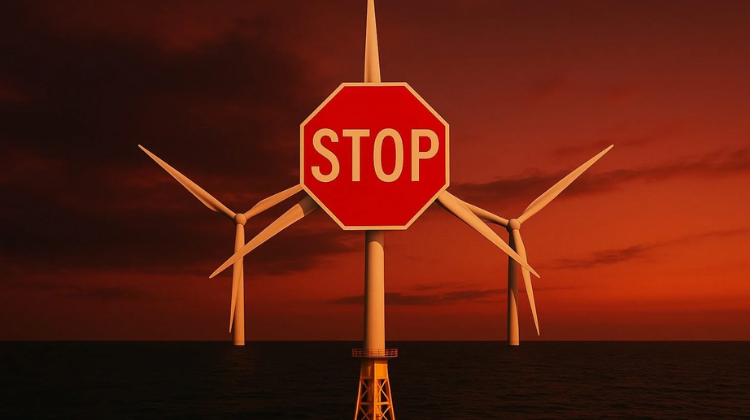Scotland has one of the most ambitious offshore wind targets in Europe, projecting 45 GW of installed capacity by 2035. Yet according to key sector players, this ambition continues to collide with a delivery reality marked by regulatory delays, infrastructure bottlenecks, and an underdeveloped supply chain.
“The new Sectoral Marine Plan is strategic in tone, but tactical in its gaps,” states John MacAskill, Managing Director of Renewables at ABL Group, in discussion with Strategic Energy Europe. “It outlines ambition, but doesn’t yet address the operational barriers we saw post-ScotWind: slow permitting, uncertain grid access, underprepared ports, and a fragmented supply chain.”
A Plan Without Delivery Architecture
The draft Sectoral Marine Plan for Offshore Wind Energy (SMP-OWE) is currently out for public consultation. MacAskill recognises it as “a serious set of documents,” though he cautions that his current reading is “an early scan, with scribbles and caveats.”
“I’m not an environmental specialist – that’s for people like Lara Lawrie at OWC – my lens is simple,” he says. “Does this plan help get good projects into the water, quickly and with confidence? Does it improve how we develop offshore wind – technically, financially, and operationally – in a way that’s robust and credible in today’s market?”
In MacAskill’s view, the plan is “strategic, ambitious, and designed to guide the next phase of development,” but adds, “plans are only as useful as the systems they operate in.”
Ambition Misaligned with Market Needs
The updated SMP-OWE introduces 18 new spatial areas designated for future offshore development, many suitable for floating technology. However, MacAskill warns that “confidence remains brittle” because the plan “has no statutory weight, is loosely tied to leasing, yet plays a decisive role in consenting. That creates ambiguity.”
According to Strategic Energy Europe, Scotland has already leased over 30 GW of capacity via ScotWind and INTOG, but only 1.9 GW is currently operational. “We’ve leased far more seabed than we’ve turned into steel. That’s the delta we must close,” emphasises MacAskill.
Grid Bottlenecks Remain the Top Risk
One of MacAskill’s central criticisms is the plan’s weak integration of grid realities into spatial strategy. “There’s no clear account of how grid constraints are baked into the plan’s logic,” he notes. While the SMP-OWE aligns with the UK’s Holistic Network Design (HND), that alignment doesn’t guarantee coordinated delivery.
“HND is a step forward, acknowledging the need to plan generation and transmission together,” he says. “But alignment on paper is not the same as real-time coordination. The major risk is lag: transformers, permitting processes, and skilled labour are all under strain.”
According to government estimates, the UK must triple its offshore transmission capacity to meet net-zero targets. For Scotland, this means urgent investment in substations, high-voltage links, and port grid access.
“We must stop treating the grid as a constraint that we react to, and start treating it as infrastructure policy,” MacAskill insists.
Planning and Ports Still Out of Sync
Another major omission is the disconnection between spatial planning and supply chain capabilities. “There’s limited evidence that port readiness is informing spatial priorities,” warns MacAskill.
He also notes that Scotland’s global leadership narrative in innovation is undermined by a lack of digital tools in the plan: “AI and data-driven environmental monitoring are nowhere to be seen. That’s a missed opportunity for smarter, adaptive planning.”
SMP-OWE’s Regulatory Review Falls Short
The plan’s accompanying Business and Regulatory Impact Assessment (BRIA) is also a concern. “It acknowledges capacity gaps, but downplays the real resourcing crunch in planning, consenting, and marine regulation,” MacAskill argues. “Scotland has big ambitions, but we still haven’t modernised the machine.”
ScotWind and INTOG: Signals, Not Delivery
The ScotWind leasing round (25 GW) and the INTOG programme (4.5 GW focused on innovation and platform decarbonisation) were seen as strong market signals. “ScotWind showed global capital that Scotland was serious. INTOG was a smart complement,” says MacAskill.
But he’s clear: “Neither makes Scotland an energy hub by itself. That takes delivery: cables laid, power exported, manufacturing scaled.”
Strategic Energy Europe confirms that while Scotland’s pipeline includes over 20 major projects, only three have reached Final Investment Decision (FID).
What Must Change: A System Built for Delivery
To avoid repeating patterns of “stranded potential”, MacAskill outlines three priorities:
-
Grid infrastructure must be treated as pre-investment, not an afterthought.
-
Planning needs new capacity, tools, and digital acceleration.
-
The supply chain must be co-designed by industry and government, not left to catch up.
He also supports the plan’s allocation of 1 GW for test and demonstration capacity, but cautions that “how it’s deployed matters. If access is simple and effective, it can be future-proof. If it’s tied up in red tape, it’ll be just another ambition.”
Public Investment: A Rare Bright Spot
Despite the gaps, MacAskill highlights some recent wins. “Policy-led co-investment by the Scottish National Investment Bank and the National Wealth Fund is attracting capital to supply chain and port infrastructure. That’s hugely valuable.”
He also welcomes initiatives like the Offshore Wind Skills Passport, which aims to upskill over 2,500 workers for the sector.
Still, he urges caution: “I’m far from glass-half-empty on Scotland’s offshore wind future – but the glass isn’t full yet. We must stop pointing at potential and start delivering it,” he concludes.































